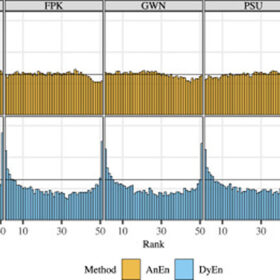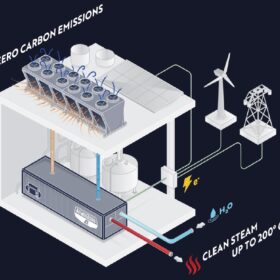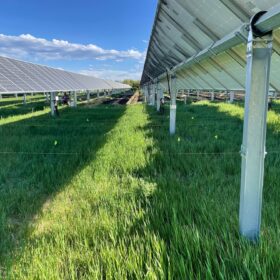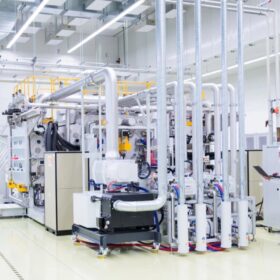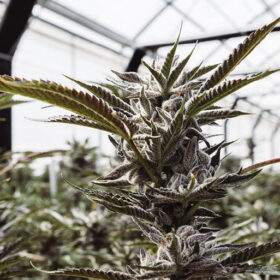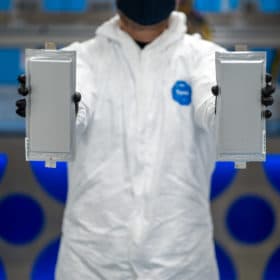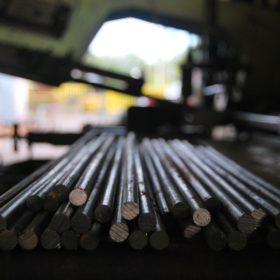What crops fit with vertical agrivoltaics?
Research at three Canadian locations tried to identify which crops can grow between differently spaced rows of vertical agrivoltaic systems. The scientists concluded that all traditional corps could be grown at the research sites, including arugula, beets, bok choy, celery, coriander, collards, fava beans, kale, lettuce, parsley, parsnips, peas, swiss chard, and thyme.
Ensemble techniques for solar energy forecasts
A Chinese research group has sought to understand the relative performance of two weather prediction techniques based on ensemble modeling for solar energy forecasts. The scientists applied the two methods in combination with three classical post-processing methods.
US startup develops air-source steam heat pump for industrial use
Colorado-based AtmosZero has closed a Series A funding round that will help it accelerate the commercialization of its Boiler 2.0 technology. The air-sourced heat pump generates steam for industrial use and can be combined with PV generation and storage.
Agrivoltaics may increase forage quality in semi-arid regions
New research from the United States showed agrivoltaic plants on grassland may not only maintain grass productivity but also increase forage quality. The scientists took their measurements at the Jack’s Solar Garden (JSG), an elevated, south-oriented agrivoltaic research facility using single-axis-tracking systems near Longmont, Colorado.
Ascent Solar announces 17.55% efficiency for CIGS tech
Ascent Solar, a US-based manufacturer, has achieved an efficiency of 17.55% for its copper, indium, gallium and selenide (CIGS) technology. It says it plans to release a new CIGS solar module with this efficiency rating soon.
Weekend read: High time for solar
Cannabis prohibition drove a culture of clandestine production in the past and solar helped growers to cultivate it at remote, off-grid sites. Now, as a global commercial cannabis market emerges, solar has an even bigger role to play.
Impact of single-axis agrivoltaics systems on non-irrigated grassland
US researchers are studying how agrivoltaic systems mounted on single-axis trackers affect rainfall and light redistribution at a 1.2 MW installation on grassland in Boulder, Colorado.
The Hydrogen Stream: Airbus plans flight test with direct combustion engine fueled by hydrogen
Elsewhere, Chinese researchers have synthesized ultrafine Pd100-xCux nanodot-modified TiO2 photocatalysts that display optimized energy barrier for interfacial hydrogen desertion, which reportedly exhibits excellent H2-evolution activity and stability, and Mitsubishi Heavy Industries has presented its plans to establish the Takasago Hydrogen Park, calling it the world’s first center for validation of hydrogen-related technologies, from hydrogen production to power generation.
Solid-state battery maker picks up $130 million investment
US based battery company Solid Power announced that it has received $130 million in new funding from investors including Ford and BMW. With this backing, the company plans to begin pilot scale production of solid-state lithium-ion batteries suitable for electric vehicles early next year.
US steel mill to get powered by 300 MW of solar
The iron and steel sector is the ‘world’s largest industrial source of climate pollution.’ This steel mill in Pueblo, Colorado, will be the first in North America to rely on solar power.

